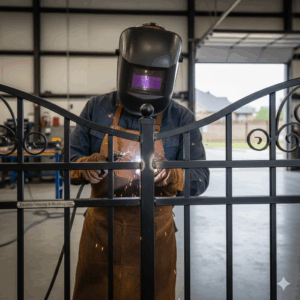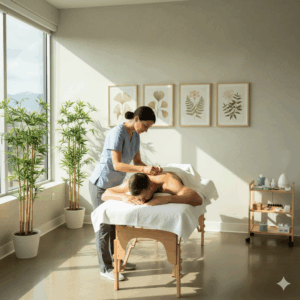The healthcare industry is undergoing significant transformations, not only in terms of technology and patient care but also in the way healthcare facilities are designed. Interior design plays a crucial role in creating environments that promote healing, comfort, and efficiency. As we move forward, several key trends are emerging in healthcare interior design that are worth noting. Here are five trends that are shaping the future of healthcare spaces, along with insights into how an interior design firm can help implement these changes.
1. Biophilic Design
Biophilic interior design firm is a trend that emphasizes the connection between nature and the built environment. This approach incorporates natural elements into healthcare spaces to enhance patient well-being and reduce stress.
- Key Features:
- Use of natural materials such as wood and stone
- Incorporation of plants and greenery
- Maximizing natural light through large windows and skylights
Research has shown that exposure to nature can improve patient outcomes, reduce anxiety, and promote faster recovery. An interior design firm can help healthcare facilities integrate biophilic elements into their designs, creating calming environments that foster healing.
2. Flexible and Adaptable Spaces
The need for flexibility in healthcare design has become increasingly important, especially in light of the COVID-19 pandemic. Facilities must be able to adapt to changing needs, whether that means accommodating more patients or reconfiguring spaces for different types of care.
- Key Features:
- Modular furniture that can be easily rearranged
- Multi-purpose rooms that can serve various functions
- Movable partitions to create temporary spaces
An interior design firm can assist healthcare providers in creating adaptable spaces that can evolve with the needs of the community. This flexibility not only enhances operational efficiency but also improves the patient experience.
3. Focus on Patient-Centered Design
Patient-centered design prioritizes the needs and preferences of patients in the design process. This trend emphasizes creating environments that enhance comfort, privacy, and accessibility.
- Key Features:
- Private patient rooms with comfortable furnishings
- Family-friendly spaces that accommodate visitors
- Clear wayfinding systems to help patients navigate the facility
By involving patients in the design process and considering their feedback, healthcare facilities can create spaces that truly meet their needs. An interior design firm can facilitate this process by conducting surveys and focus groups to gather insights from patients and their families.
4. Technology Integration
As technology continues to advance, healthcare facilities must incorporate these innovations into their design. This includes everything from telehealth capabilities to advanced medical equipment.
- Key Features:
- Integrated technology for patient monitoring and communication
- Smart room features that allow patients to control their environment
- Charging stations and connectivity options for patients and visitors
An interior design firm can help healthcare providers seamlessly integrate technology into their spaces, ensuring that it enhances the patient experience without overwhelming the environment. Thoughtful design can make technology feel like a natural part of the healthcare experience.
5. Sustainable Design Practices
Sustainability is becoming a key consideration in healthcare interior design. Facilities are increasingly looking for ways to reduce their environmental impact while creating healthier spaces for patients and staff.
- Key Features:
- Use of eco-friendly materials and finishes
- Energy-efficient lighting and HVAC systems
- Waste reduction strategies, such as recycling and composting
Sustainable design not only benefits the environment but also contributes to the overall health and well-being of patients and staff. An interior design firm can guide healthcare facilities in selecting sustainable materials and implementing green practices that align with their values.
Conclusion
The trends in healthcare interior design are evolving to meet the changing needs of patients, providers, and the environment. By embracing biophilic design, creating flexible spaces, focusing on patient-centered design, integrating technology, and adopting sustainable practices, healthcare facilities can enhance the patient experience and improve outcomes. Collaborating with an experienced interior design firm can help healthcare providers navigate these trends and create spaces that are not only functional but also healing and welcoming.
What People Also Ask
What is biophilic design in healthcare?
Biophilic design in healthcare refers to the incorporation of natural elements into the built environment to enhance patient well-being and reduce stress. This can include the use of natural materials, plants, and maximizing natural light.
How can flexible spaces benefit healthcare facilities?
Flexible spaces allow healthcare facilities to adapt to changing needs, such as accommodating more patients or reconfiguring areas for different types of care. This adaptability enhances operational efficiency and improves the patient experience.
What is patient-centered design?
Patient-centered design prioritizes the needs and preferences of patients in the design process. It focuses on creating environments that enhance comfort, privacy, and accessibility for patients and their families.
Why is technology integration important in healthcare design?
Integrating technology into healthcare interior design firm is essential for improving patient care and communication. It allows for advanced medical equipment, telehealth capabilities, and smart room features that enhance the overall patient experience.
How can sustainable design practices impact healthcare facilities?
Sustainable design practices reduce the environmental impact of healthcare facilities while creating healthier spaces for patients and staff. This includes using eco-friendly materials, energy-efficient systems, and waste reduction strategies.








